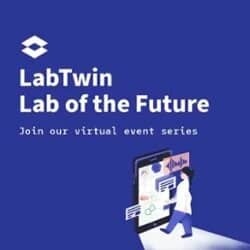Maria-Isabel leverages molecular biology tools, genomics, and microbial ecology to study bacteriophages. We caught up with Maria-Isabel to learn how LabTwin’s voice-activated digital lab assistant helps her safely work with pathogens.
Why did you decide to start using LabTwin’s digital lab assistant?
I work with pathogens and need to take off my gloves or change them in order to take notes. I also work in biosafety cabinets and to record changes in protocols, reminders, and findings, I need to remove myself from the cabinet and go to the bench to write down my findings and observations. I needed a tool that would allow me to take notes, make changes to protocols, and set up timers as the experiment progressed without having to take off my gloves or move to a different bench. Voice is the perfect solution.
How were you managing lab documentation before LabTwin?
I had various notebooks - one for each project. Now with LabTwin, I can use digital labels for each of the projects which makes it easy to sort data and store it all in one place.
Was LabTwin’s voice-powered digital assistant easy to set up? Is the app easy to use?
It was very easy to set it up and use. The headset helps remove background noise so only my observations are transcribed.
What do you like most about LabTwin?
That I can record my notes, using my voice, without having to remove my gloves or find the right notebook or walk away from my experiment.
What features would you like us to add to LabTwin’s voice-activated digital lab assistant?
I would like to be able to make small calculations such as molarity to streamline the production of solutions and media. I would also like to record a table´s layout, for example, in a 96-well plate (Note from the author: LabTwin has recently implemented a tables feature and calculations are part of LabTwin´s product roadmap).
What benefits has LabTwin provided for your research?
It has significantly helped me when performing my experiments in the laboratory. I have seen a reduction in the time it takes to perform some tasks and my documentation has also benefited from it. Before LabTwin, I used to take hand-written notes which often got lost or forgotten.
What kind of work would you say LabTwin is suited for?
It is well-suited for laboratory work that requires both hands and a certain level of biosafety. Typically, graduate students share one or two projects with other lab members as well as R&D facilities. Technology like LabTwin really helps people collaborate on projects.
What are your thoughts on LabTwin's impact on research efficiency and reproducibility?
It increases efficiency by reducing the time wasted by taking off gloves and walking away from experiments, which also translates into making less mistakes. It would only increase reproducibility if researchers share information, for example, protocols, with other members and over time. Otherwise, the "broken telephone" typical of messy notebooks and poorly recorded protocols will still happen.
In your opinion, how will a voice-powered product like LabTwin contribute to the Lab of the Future?
Definitely experiments will be faster, multi-tasking will become easier and reproducibility higher if information is at some point curated or made uniform for the next lab member to use it. Most importantly, technology like LabTwin will significantly reduce the amount of data that is lost when people forget to record it. This includes errors that lead to new findings, for example when a longer incubation or a modification to the protocol yields good results but the next time this experiment is done, the protocol is followed as if the error never happened and the results cannot be replicated.











